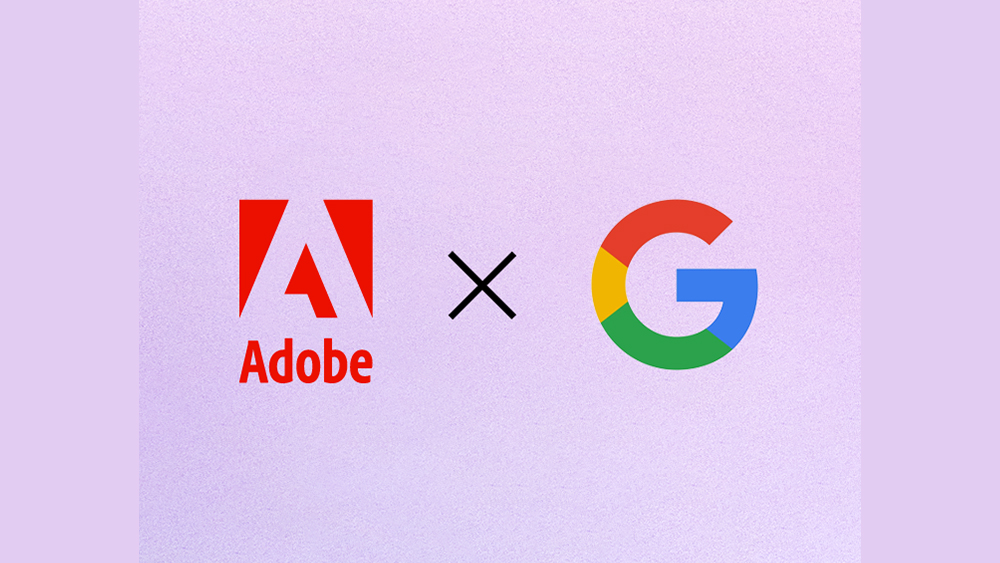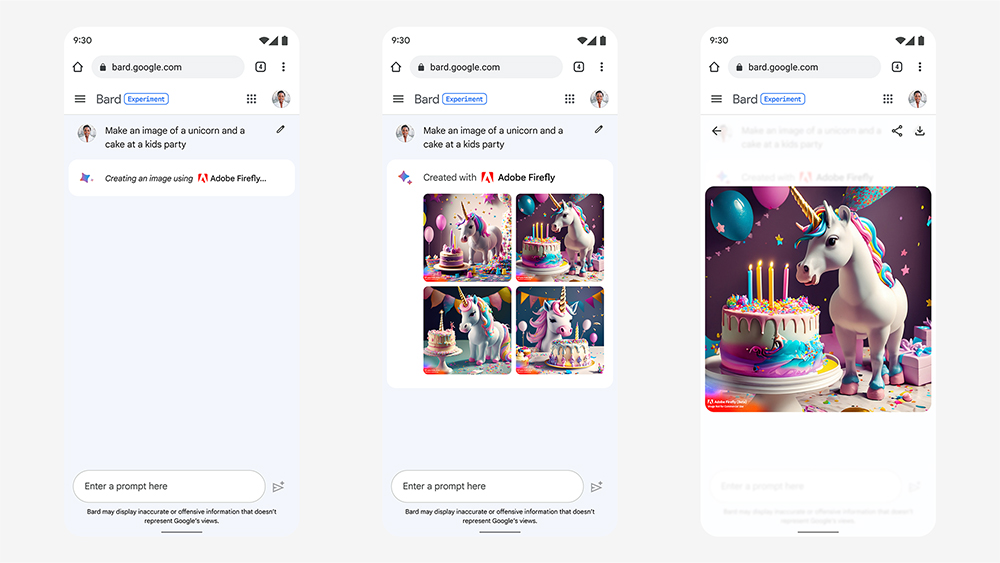
As well as hardware news on the Pixel Fold and 7a, the Google I/O 2023 developer conference in Mountain View, California, saw a big focus on AI. From image generation in Bard to generative AI wallpapers and AI-enhanced text composition, Google aimed to show it was winning the AI race.
One of the big announcements for art and design is the incorporation of Adobe's AI image generator Firefly into Google Bard (see our pick of the best AI art tutorials if you need to start brushing up). And thankfully Google also announced new tech to help identify the mass of AI images being created. Here's everything you need to know.
Adobe Firefly brings AI art to Google Bard

There was a big announcement from Adobe at Google I/O. It's bringing the Adobe Firefly text-to-image generators into Bard, Google’s experimental conversational AI service. Users will be able to describe the image they want and generate images directly in Bard. It will then be possible to modify the AI images or use them to create designs in Adobe Express.
Adobe says it will use the Content Authenticity Initiative’s (CAI) open-source Content Credentials technology to ensure transparency for the images generated. The project aims to allow people to identify whether content was created by a human, AI-generated, or AI-edited. All AI-generated images will contain meta data identifying them as such.
The announcement comes after Microsoft revealed plans to add image generation to Bing last year, but crucially the integration with Firefly and Adobe Express is likely to give users more control. Bard itself will be integrated into Google applications such as the search engine, Docs, Lens, Photos and Maps, allowing content creation in these apps and giving recommendations, lists and assistance for search.
Authenticity of AI images
On the topic of image authenticity, Google dedicated space at I/O to the importance of responsibility in using and generating content with artificial intelligence. It announced that users will be able to ask Google Lens to verify how real images are while it is developing tools to add watermarks and warnings.
AI-generated wallpapers in Android
When your device matches your energy >>> With just a few taps, you can create Generative AI wallpapers to customize your experience. Coming soon to Android. #GoogleIO pic.twitter.com/dJQLynq7rYMay 10, 2023
Also at Google I/O, the tech giant announced that from autumn, Android users will be able to use Generative AI Wallpaper to design custom lock screens. Users will be able to tap ‘create a wallpaper with AI’ and choose from a variety of text prompts. The phone will update the rest of its UI colour palette based on the new lock screen.
Google stresses that the system was trained on public domain images, ensuring that no copyright is infringed. It also plans to introduce customized ‘emoji’ and ‘cinematic’ wallpapers for Pixel devices as soon as next month.
More AI announcements at Google I/O
Google also announced AI tools for text. In his keynote presentation, Google CEO Sundar Pichai announced Magic Compose, which will be able to suggest changes to text messages to achieve a designed tone of voice. The tool will be launched in beta in the summer and will be activated using a magic wand icon in Google’s messaging app
“Our bold and responsible approach to AI can unlock people’s creativity and potential," Pichai promised "We also want to make sure this helpfulness reaches as many people as possible."
Wondering what you can do with AI art? See our pick of the freakiest AI art of 2023 so far. And for more Google news, check out the reaction to the latest Google logo redesign.







